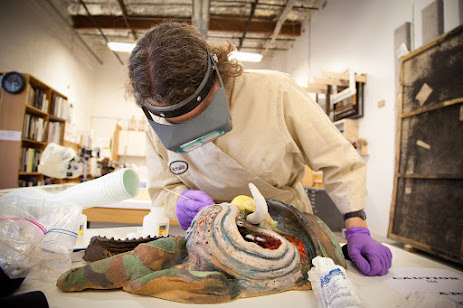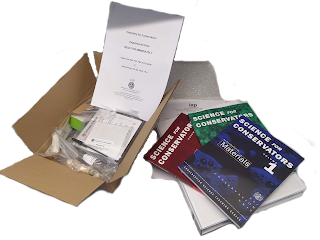Domestic Digitising Doings 02: Gearing Up
What’s this, a suspicious package? No, but it is DA BOMB 😊
 |
| Shiny. Shiny shiny shiny. |
It’s a shiny new slides/negatives scanner – the Plustek OpticFilm8200i. Ta-daa!
Having previously identified the scale of the task at hand to digitise my family's photograph collection, we move onto how best to scan the images and what best to scan them with...
I did consider getting the Epson V600 which I’ve used professionally before and has certain advantages, such as scanning multiple transparencies simultaneously and being a generally more versatile flatbed scanner than dedicated photo scanners. However, after much research and stressing over a budget, I picked the Plustek as the best compromise between quality and affordability (even then it was at the VERY UPPER end of affordability, but hey – it’s Christmas…)
There’s several flavours of the Plustek but in the end I
chose the version which comes bundled with the Silverfast 8.8 AI scanning
software for the extra dust removal and workflow features (neither of which I’ve
ultimately end up using, but I like options, damnit)
 |
| I'm sure Tom Baker boarded one of these in the '70s. |
Easy to set it up – let’s see what it’ll do with our trusty Signal Box test slide…
 |
| Left - Epson RX620. Right - Plustek 8200i. 2400ppi sample, 10 x 8" 48bit 300ppi image from both. |
Early indications definitely positive! Ignoring the differences in colour which can all be adjusted to taste later, when scanning at the same sampling rate (2400ppi producing 10 x 8” image at 300ppi) the Plustek slide is noticeably sharper. I was very pleased to see the lovely grain texture of the transparency being captured nicely which can really be seen when zooming in on the Plustek scan as opposed to the Epson example, where zooming in rapidly produces pixelly mush. To be fair to the Espon scanner there's a good ten years separating the machines and the RX620 deserves credit for still working at all.
Actually with all the test scans from the Plustek, at any quality setting, I've been very impressed how zooming waaaaaaaaay in runs up against the limitations of the detail in the original photo long before any pixelation or digital processing becomes evident. Nice one, Plustek.
BASE QUALITY
Given the amount of slides to scan (thousands) I’m looking for the best balance between time per scan, scanning quality and final file size. From past museum experience I've learned that huge files can be lovely quality but also impossible to access and browse through in a hurry, especially on hardware within the average museum budget, so inevitably a compromise has to be reached. (At one point in a previous job I would turn up to work early, start loading the MODES database of 30,000+ photographs and then go for breakfast while the PC groaned under the weight of so many .tifs. This is where low-res jpeg reference copies come into their own! But I digress)
I’m also aiming for minimal intervention at the scanning stage to create archive-quality images – so reducing dust the slide has picked up over time is fine (my project, my rules) but no colour correction or other digital editing will be performed just for storage. Any editing will be done later from a copy of the image depending on its ultimate use.
For the last few years in archive work the scanning standards I’ve used have been a 2400ppi sample rate producing a 10 x 8” image at 300ppi saved as a .tif, producing
a lossless file between 40-50mb in size.
While images I’ve digitised to these standards have been used on the web, publications, merchandising, TV (no less than the BBC, don't ya know) and even being enlarged to full-size when building exhibitions, I’m aware that I’ve been scanning like this for nearly ten years so it’s perfectly possible tech has moved on without me in that time! Time to experiment…
AND THEN THERE WAS EXPERIMENTING
Ok, I experimented with three main software settings for the ongoing grind of scanning slide after slide after slide after slide. The results were thus;
Test 01 – 7200ppi sample, 33 x 22” image at 300ppi, 48bit
scan. Crashed the laptop. File size had passed 400mb before crashing and didn’t
save. NOPE!
Test 02 – 3600ppi sample, 10 x 8” image at 300ppi, 48bit
scan. 2:12 time per scan, 55mb file. Maybe!
Test 03 – 2400ppi sample, 10 x 8” image at 300ppi, 48bit
scan. 1:12 time per scan, 40mb file. Winner winner, chicken dinner!
So – scanning at 7200ppi seems impossible with the available computer hardware, scanning at
3600ppi is fine but doubles the time taken per scan so we return to 2400ppi as
the best trade off ‘twixt time, quality and storage.
But…
There’s always a but. I like big buts, and I cannot lie.
 |
| Left - Half-frame slide. Right - Full-frame 35mm slide. Half-frame - half the size, twice the grain. |
Regular slides will be sampled at 2400ppi BUT our collection boasts hundreds of half-frame slides. Half-frame cameras were popular in the 1960s/1970s as they would squeeze 72 shots out of a regular 36 exposure 35mm film, at the cost of halving the size of the image to roughly 16mm quality. To wring the greatest quality out of these smaller images I’ll increase the sampling rate to 3600ppi and accept these will take slightly longer to scan. Fortunately I’m INCREDIBLY PATIENT.
FANCY FEATURES
OF DUST AND… MEN?
Dust, dust, dust. Let’s have a look at one of the most
trumpeted features of the Plustek 8200i – the infra-red dust removal. This works
through… magic, presumably.
Ok, so below is a dusty section of our test slide without any
intervention
Now I’ve let SuperFast 8.8 AI work its magic infra-red pre-scan which has identified dust on the transparency. You can adjust how diligent this filter is – below I’ve set it to somewhere in the middle of its full power as turned up full it tends to decide telegraph poles are dust and tries to paint them out with messy artefacty results.
And finally below is the dusty section with the dust-be-gone
filter applied. Impressive! (notice artefacting on the telegraph poles - the filter needs careful training per slide to not paint out actual details)
CONCLUSION
The dust removal is a powerful tool and certainly makes a difference to the more dirty slides. Sadly it also adds a minute to the scanning time per slide so, aside from the most degraded slides or those of particular interest for large printing, I won't be using dust removal by default.
DOUBLE EXPOSURE
The multiple exposure feature isn't as obviously sexy and visible as the dust removal, but I wanted to experiment with it all the same. The idea is the scanner takes two scans of the slide at different exposures and combines them to create an image with more depth and detail. I thought this feature might be particularly useful at bringing out crushed detail in some of the many, many, many photos of black steam locomotives I'll be coming across, so fired it up...
 |
| Left - Single exposure. Right - Multiple exposure. See the difference? Me neither. |
Hmm. Bit disappointing, to be honest. I'm sure multiple exposure does make a difference and produces more detailed images, I'm just not seeing it myself. Might revisit this later in the project if/when we come across impossibly murky slides. In the meantime, because the feature involves literally scanning the image twice and therefore doubling the scan time, I will be sticking to single exposure scanning!
ONWARDS AND SCANWARDS
So - I know what quality I'm scanning at, I know what fancy bells and whistles of the highly impressive and powerful Silverfast software I'll be using, or not as the case may be. It's time to get scanning! Woo!







Comments
Post a Comment